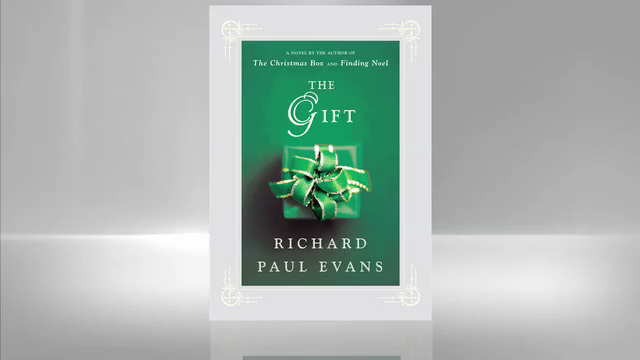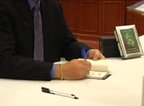Table of Contents
About The Book
A heartwarming and inspirational Christmas novel in the tradition of The Christmas Box and Finding Noel from New York Times bestselling author Richard Paul Evans. Sure to be a classic, this new tale brings to life the joy of the season and demonstrates the redemptive power of love: there is no hurt so great that love cannot heal it.
Nathan Hurst hated Christmas. For the rest of the world it was a day of joy and celebration; for Nathan it was simply a reminder of the event that destroyed his childhood until a snowstorm, a cancelled flight, and an unexpected meeting with a young mother and her very special son would show him that Christmas is indeed the season of miracles.
From the beloved author of the international bestseller The Christmas Box comes another timeless story of faith, hope, and healing.
Nathan Hurst hated Christmas. For the rest of the world it was a day of joy and celebration; for Nathan it was simply a reminder of the event that destroyed his childhood until a snowstorm, a cancelled flight, and an unexpected meeting with a young mother and her very special son would show him that Christmas is indeed the season of miracles.
From the beloved author of the international bestseller The Christmas Box comes another timeless story of faith, hope, and healing.
Reading Group Guide
The Gift
Richard Paul Evans
Questions and Topics For Discussion
TIPS TO ENHANCE YOUR BOOK CLUB
Richard Paul Evans
Questions and Topics For Discussion
- At the beginning of the book, there’s an author’s note, letting the reader know that he, like the protagonist has Tourette’s. Why do you think the author does this and what, if any, effect does it have on your reading of the story? As Nathan is cured of Tourette’s early in the novel, why do you think Nathan himself finds it so important to tell us at the beginning that he suffers from Tourette’s?
- Nathan is haunted by his childhood. In what ways does his past affect his present life? For example, what effect does it have on his choice of profession or on his relationships with women and why? Are there any other characters in the novel haunted by their past and, if so, who and how?
- Nathan writes about how he’s always been able to attract relationships but that they never seem to last. To what do you attribute this? He also says that Addison has a “maternal quality” and that in the past he has tended to attract the opposite type. In your opinion, why is it that this time Nathan has attracted a “maternal” woman like Addison?
- Nathan writes about his very dysfunctional family, while Addison portrays her family relationships as filled with love. What do you think brings these two characters together? What do they have to teach each other? And what do they have to learn from each other?
- Stealing and giving are both major themes in The Gift. What are some of the different types of stealing portrayed in the novel? What are some of the different gifts or ways of giving? Discuss the relationship between stealing and giving as developed in the story.
- The healing power of love is one of the strongest themes in the novel. That power is stated in the quote: “There’s no hurt so great that love can’t heal it.” What is “love” in the world of The Gift? How does love heal Addison, Nathan, Collin, and Miche? Is there anyone in the story who can’t be healed by love? Did you find reading the novel in itself healing? If yes, how?
- Although Collin is able to restore to life people who have died, when he does so it makes him sick. If healing is a gift, why should it hurt the giver? Why shouldn’t “giving” which seems like a good thing, make the giver stronger and not weaker? Why might the author have created Collin this way? What might Evans be trying to say about the relationship between healing and sacrifice? Are there other examples in the novel where healing and sacrifice go hand in hand? Explain.
- In The Gift, the morality of whether or not someone should heal another person or bring them back from the dead is examined. Pastor Tim makes reference to the fact that some people may see what Collin is doing as the devil’s work. Do you think Collin is interfering with someone’s fate or God’s plan? If so, why or why not? Are Collin and Addison playing God by deciding who should be healed? To what do you think the gift in the title is referring?
- The story also raises an interesting ethical question. Addison believes that Collin shouldn’t save “bad” people or save people for profit, as her husband Steve believes. What do you think about Addison and/or Collin’s decision to heal some people but not others? What makes Collin’s healing different from a doctor's work? Would you let yourself be “miraculously” brought back from death if you could? Why or why not?
- One of the most interesting things about Collin is that he can’t heal himself. Why would the author, or God, make this so? Does anyone in the story heal him- or herself? If so, who, and how? If not, why not?
- There are many ironies in The Gift. For instance, it’s through sickness and Collin’s suffering that Addison and Nathan are brought together in love. What other ironies can you detect? Why might the author choose to use irony in The Gift? What effect does it have on the story and on you, the reader?
- Nathan writes, “Collin became the canvas on which we painted our souls: in brilliance or darkness. . .” Explain what this means within the context of the novel.
- Death and rebirth are part of the world of The Gift. Discuss how this is played out in the lives of the different characters. How, if at all, has your perception of death changed after reading the book and why?
- The nature of children, childhood, and mothering are all explored in The Gift. Why might the author choose to give so much attention to these subjects? How is each of these related to the main theme of healing?
- Nathan says that he believed that Collin “changed our world.” How did Collin change their world? How did Collin give Nathan back his soul?
- The last words we hear from Collin are to his sister Elizabeth in her dream. He says, “Don’t cry so much. In the end, love wins.” If love wins, what does it win out over?
- Nathan writes at the beginning that his story is not a Christmas story, but in the end, he thinks perhaps that it is. Is it the story that has changed or is it the narrator? How, if at all, did Nathan change over the course of the story? Discuss why The Gift might be considered a Christian allegory.
TIPS TO ENHANCE YOUR BOOK CLUB
- For further information on Paul Richard Evans and a look at his many bestselling books, visit his Web site at: www.richardpaulevans.com.
- Your group might want to make a study, comparing different visions of life after death. The following books could help you begin:
On Life After Death and Tunnel and the Light: Essential Insights on Living and Dying, both by Elisabeth Kübler-Ross, M.D.
Secrets & Mysteries of the World by Sylvia Browne
The Teachings of Don Juan by Carlos Castaneda
- Learn more about Tourette’s syndrome at: http://en.wikipedia.org/wiki/Tourette_syndrome
Product Details
- Publisher: Simon & Schuster (October 9, 2007)
- Length: 192 pages
- ISBN13: 9781416553038
Resources and Downloads
High Resolution Images
- Book Cover Image (jpg): The Gift eBook 9781416553038
- Author Photo (jpg): Richard Paul Evans Photo by Emily Drew.(0.1 MB)
Any use of an author photo must include its respective photo credit
















